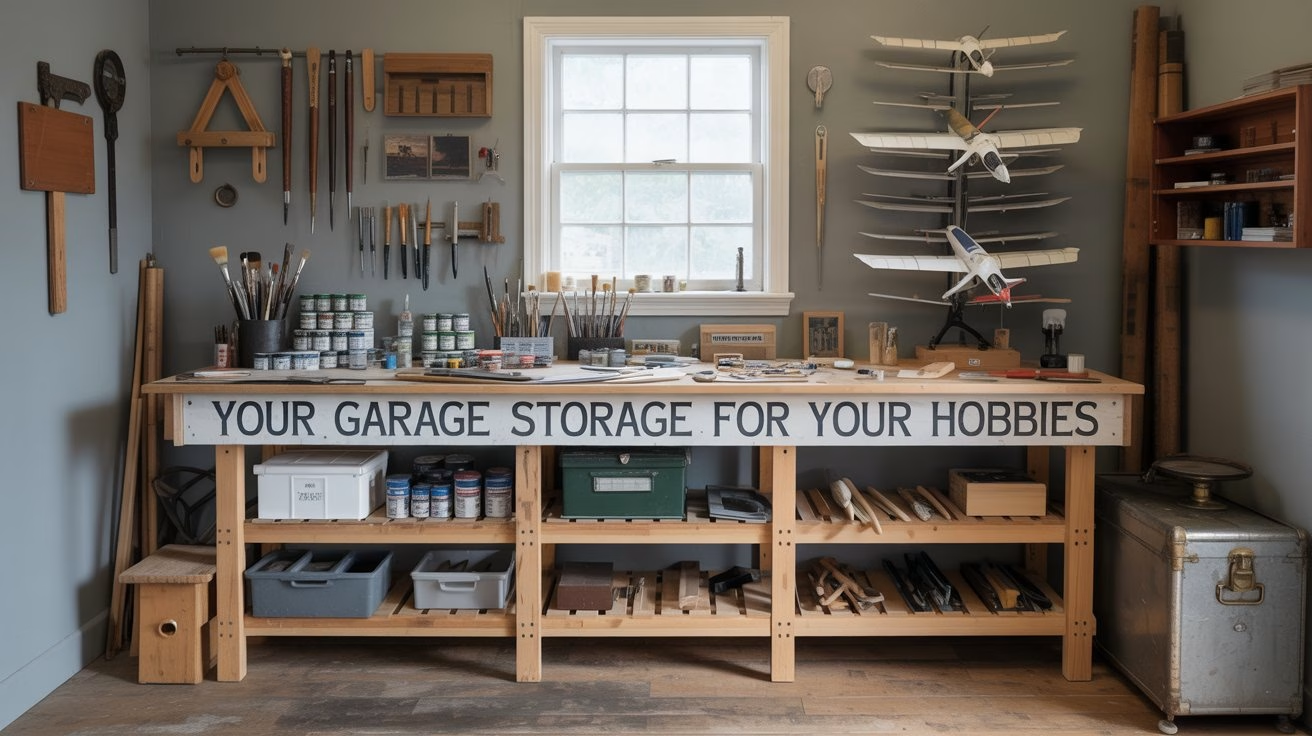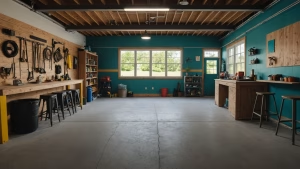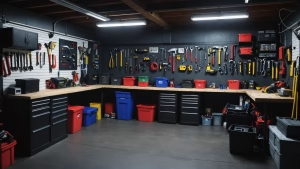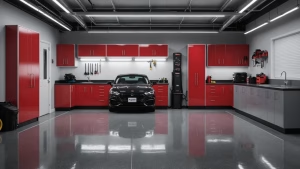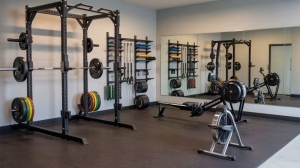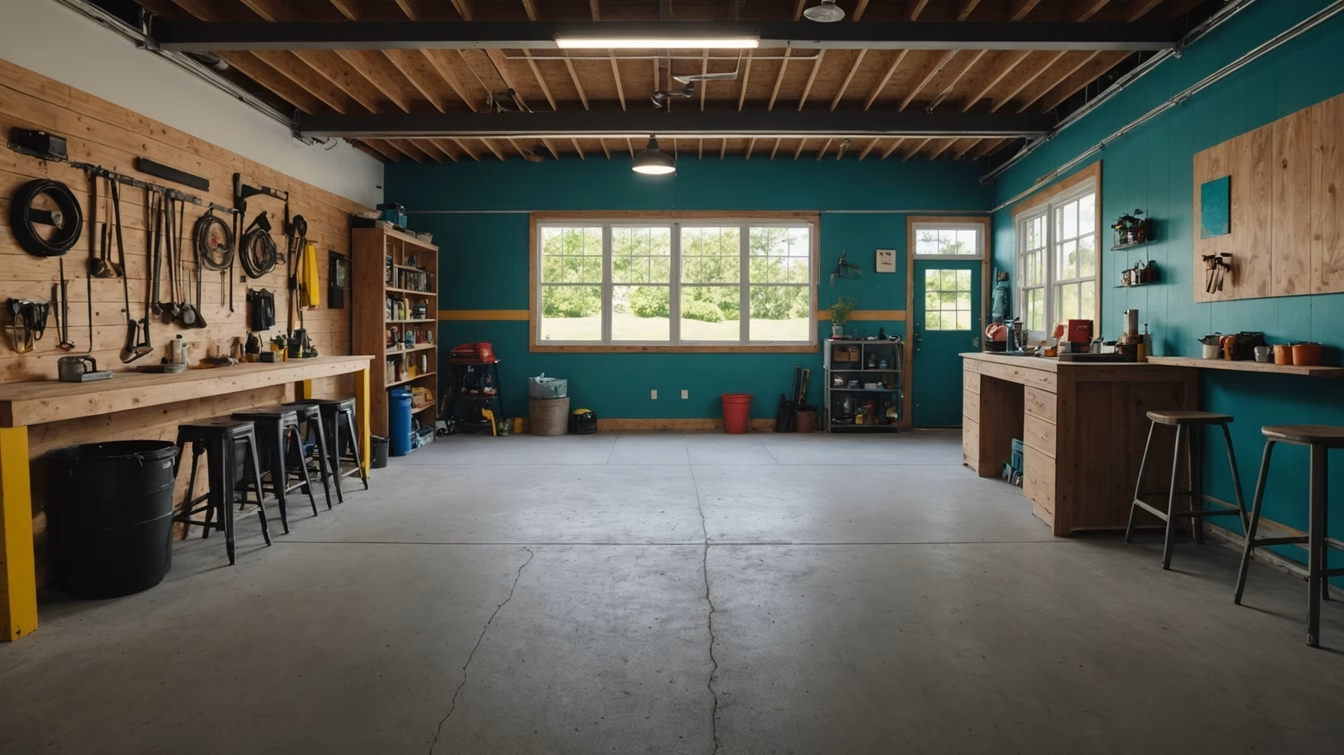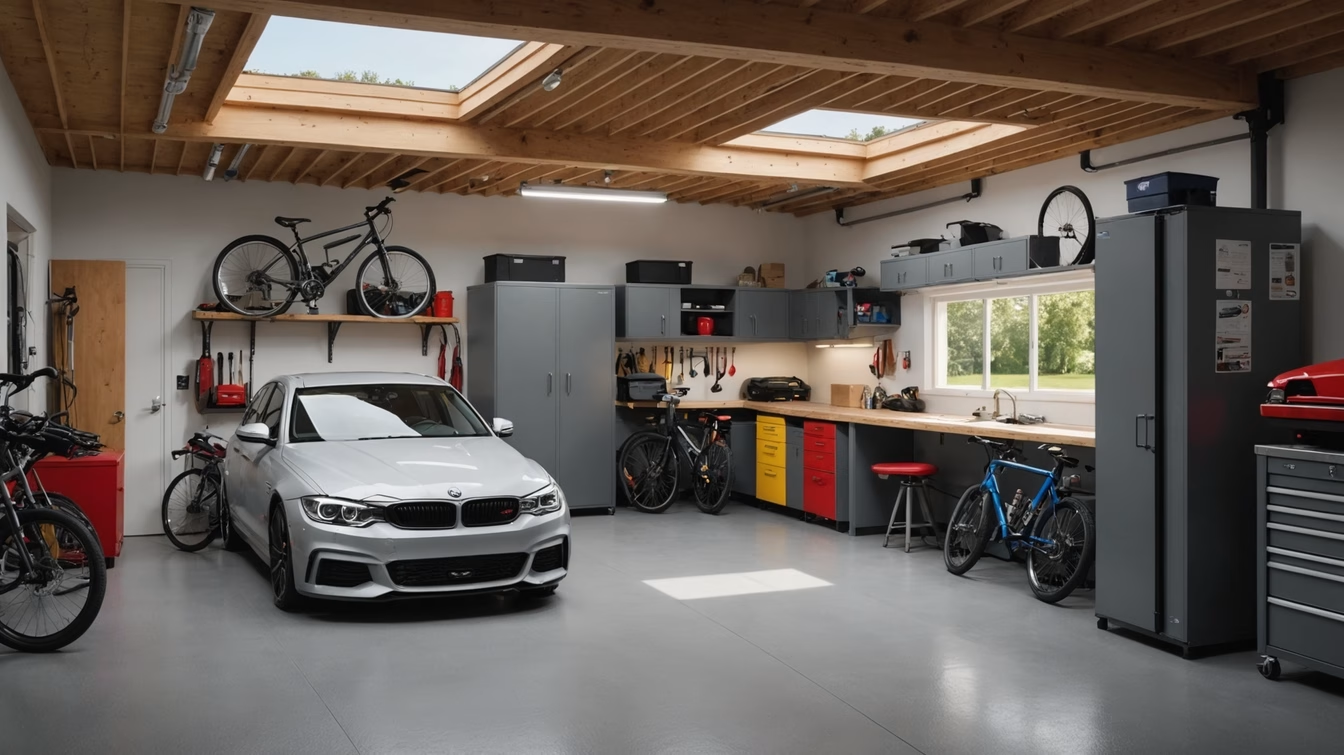The garage, often considered a transitional space for vehicles, is now a frontier for personal expression and a sanctuary for passion projects. It’s where the gardener finds solace in soil, the athlete re-lives the last game, and the DIY enthusiast plans the next great build. However, this multi-faceted utility can quickly descend into chaos, with misplaced tools, tangled equipment, and an endless search for that one elusive item. The core of this challenge lies not in a lack of space, but in a failure to organize with intention.
Generic shelving and a few scattered hooks can’t solve the unique organizational needs of diverse hobbies. This requires a tailored approach, one that recognizes the specific shapes, sizes, and access requirements of your gear. By creating dedicated zones—a Gardening Hub, a Sports Zone, and a DIY Workshop—you can transform your garage from a repository of clutter into a highly efficient, functional, and inspiring space. This guide is a roadmap to achieving that, providing specific, clever, and actionable solutions to help you regain control, protect your investments, and, most importantly, fuel your passions.
The Gardener’s Hub: Cultivating an Organized Oasis
Gardening is a practice of patience and precision, yet a disorganized space can quickly sow frustration. The challenge is twofold: managing an array of tools, from delicate hand pruners to cumbersome rakes, and keeping messy supplies like soil and fertilizer contained. A well-designed gardening hub prioritizes easy access and cleanliness, ensuring that your time is spent in the garden, not searching for your tools.
The foundation of this zone begins with the tools you use most frequently. Long-handled tools—shovels, rakes, hoes, and brooms—are notorious for toppling over or lying in a messy pile. The most effective solution is to get them off the floor and onto the wall. A simple rack or a series of heavy-duty utility hooks mounted to the wall can hold these tools vertically, saving valuable floor space. For an even more robust and customizable system, consider a slatwall panel system with specialized hangers. This allows you to position and reposition tools as your collection grows or changes, ensuring that everything from a post-hole digger to a leaf blower has a designated, secure spot.
Table 1: Smart Storage Solutions for Gardening Tools
| Tool Type | Problem Solved | Clever Storage Solution |
| Long-Handled Tools (Shovels, Rakes, Hoes) | Leaning against walls, creating a tripping hazard and clutter. | Wall-Mounted Rack or Hooks: A single, horizontal rack with slots for handles or individual J-hooks. A French cleat system can also be customized for this. |
| Small Hand Tools (Trowels, Pruners, Weeder) | Easily lost or scattered among other items. | Magnetic Strips or a Pegboard: A magnetic bar above a workbench keeps metal tools visible and within reach. A dedicated section of pegboard with specific hooks for each tool provides visual order and quick access. |
| Pots and Planters | Stacked haphazardly, taking up a lot of space. | Nesting Baskets or a Wall-Mounted Shelf: Nesting smaller pots within larger ones and storing them on an open shelf. For a more sophisticated look, an adjustable wire shelving unit can hold various sizes while allowing for airflow. |
| Seed Packets and Fertilizers | Crumpled bags and packets that get lost or spilled. | Clear, Labeled Bins or a File Box: Use clear, stackable plastic bins with tight-fitting lids for fertilizers and soil. A dedicated file box with dividers (A-Z or by plant type) is perfect for organizing seed packets and protecting them from moisture. |
| Hoses and Watering Cans | Unwound hoses clutter the floor; cans get dented. | Hose Reel or Wall Hanger: A wall-mounted hose reel keeps the hose neatly contained. An oversized hook or a dedicated shelf keeps watering cans off the ground, preventing damage and spills. |
Beyond tools, creating a functional potting bench is a game-changer. This central workstation provides a dedicated surface for mixing soil, planting, and repotting. A workbench with built-in storage, such as drawers or shelves beneath, can house bags of soil, pots, and other supplies. Installing a pegboard or slatwall above the bench allows you to hang frequently used hand tools, twine, and gloves, turning it into a complete and efficient command center for all your green-thumb activities. To manage the mess, a simple, non-slip mat underneath the bench makes for easy cleanup of soil spills and debris.
The Sports Zone: From Chaos to a Champion’s Locker
Sports equipment, with its assortment of shapes and sizes—from bulky helmets and pads to a cascade of balls—presents a unique organizational puzzle. The goal here is to create a dynamic, accessible space that encourages both use and, critically, return of the gear. A well-organized Sports Zone eliminates the scramble before a game and prevents gear from being damaged underfoot.
Elevate your organization game with the Gadroad Sports Equipment Organizer, a versatile storage solution designed for those who cherish a tidy and efficient space. This multifunctional rack is perfect for garages, combining functionality and style with its sleek black design.
The organizer features a comprehensive 3-layer system equipped with two large storage bins, two movable middle baskets, and a dedicated rack for bats, complemented by an additional removable bat rack and three detachable hooks. This setup is ideal for accommodating a range of sports gear—baseballs, helmets, gloves—and even non-sport items like yoga supplies or toys.
For the most common culprit—the loose collection of balls—the solution is both simple and effective. A vertical ball rack is a must-have. These racks can hold a dozen or more basketballs, soccer balls, and volleyballs in a compact, vertical footprint, keeping them off the floor. Another clever, DIY option is to build a corral from bungee cords or elastic netting stretched across a wooden frame. This allows balls to be easily “popped” in and out, making retrieval and cleanup a breeze.
For other gear, a layered approach to storage works best. Large, oddly shaped items like hockey sticks, baseball bats, or tennis rackets can be hung vertically using specialized hooks or mounted racks. This not only saves space but also protects the gear from being bent or broken. Helmets, pads, and cleats can be stored in large mesh bags or open wire baskets. The mesh material is key, as it allows for air circulation, preventing the buildup of moisture and odor after a sweaty practice.
List of Pro Tips for Sports Gear Organization:
- Create a “Drop Zone”: Place a small bench or set of hooks near the garage door entry. This is a designated spot for gear bags, jackets, and shoes, preventing them from being dragged into the house.
- Utilize a Slatwall System: This is a versatile solution for a family with diverse sports interests. A slatwall can accommodate hooks for bikes, baskets for balls, and shelves for helmets and shoes, all in one cohesive system that can be reconfigured as your kids’ hobbies evolve.
- Install a Drying Rack: For wet uniforms or gear, a simple wall-mounted or collapsible drying rack provides a place to air things out before putting them away, preventing mold and mildew.
- Label Everything: Use labels on bins, shelves, and hooks. This is especially important for multi-user spaces and helps to ensure that everyone knows where to find and, more importantly, return their gear.
- Think Upward: Don’t forget the ceiling. Overhead hoists or racks are perfect for storing large, seasonal items like kayaks, skis, or camping equipment, freeing up prime real estate on the walls and floor.
The DIY Workshop: A Craftsperson’s Command Center

The DIYer’s garage is a laboratory of creation, but a cluttered one can stifle productivity. A well-organized workshop is a direct reflection of a well-organized mind. The core of this zone is a system that makes every tool and fastener instantly accessible, allowing you to move seamlessly from one step of a project to the next without a frustrating hunt.
The most critical component of a functional workshop is a dedicated workbench with ample storage. This is where most projects will be done, so having your most-used tools within arm’s reach is essential. Power tools—drills, saws, sanders—can be a challenge due to their size and various accessories. A custom-built power tool charging station is an elegant solution. This station, which can be mounted on the wall or built into a cabinet, features dedicated slots or holsters for each tool and a centralized power strip for charging batteries. This keeps your tools organized, your batteries charged, and prevents the constant search for a spare outlet.
For hand tools, which are typically smaller but more numerous, a pegboard system reigns supreme. Pegboards allow you to arrange tools visually, making it easy to see if a wrench or screwdriver is missing. Outlining the tools with a marker directly on the board can further enhance this system, creating a visual reminder of where each item belongs. For a more refined look, a magnetic tool holder can be mounted above the workbench, providing a powerful and sleek way to store metal tools.
Organizing screws, nuts, bolts, and other small fasteners is perhaps the most daunting task. A single spilled container can ruin an entire afternoon. The solution is compartmentalization.
Table 2: Solutions for Organizing Small Parts and Hardware
| Storage Method | Description | Pros | Cons |
| Multi-Drawer Parts Cabinet | A plastic or metal cabinet with dozens of small, clear drawers. | Excellent for small spaces; drawers are clear for easy viewing; can be labeled. | Drawers can be small; not ideal for very large items; can be heavy. |
| Portable Parts Organizer | A case with various-sized, removable compartments. | Portable; secure lids prevent spills; compartments can be taken to the project. | Not ideal for large collections; can be easy to misplace a small box. |
| Wall-Mounted Bins | Open-front plastic bins hung on a wall-mounted panel. | Highly visible; easy to grab a handful of fasteners; utilizes vertical space. | Bins can collect dust; not portable; requires dedicated wall space. |
| Glass Jars with Lids | Re-purposed glass jars with lids screwed to the underside of a shelf. | Inexpensive; can be a DIY project; highly visual. | Not portable; can be heavy and difficult to open with one hand. |
Finally, lumber storage requires a specific solution. Lumber left on the garage floor can warp and take up a significant amount of space. A vertical lumber rack mounted to the wall is the most space-efficient method for storing long boards and sheet goods. This rack holds the wood on its edge, preventing warping and making it easy to browse and select the piece you need. For smaller pieces and off-cuts, a series of labeled bins can be placed on a shelf or tucked under the workbench, ensuring that no usable material is wasted.
By implementing these tailored solutions for your passions, you can transform your garage from a place of frustration into a source of inspiration. When your gear is organized “your way,” it’s not just stored—it’s ready for action, allowing you to dive into your next project or hobby with enthusiasm and ease.

